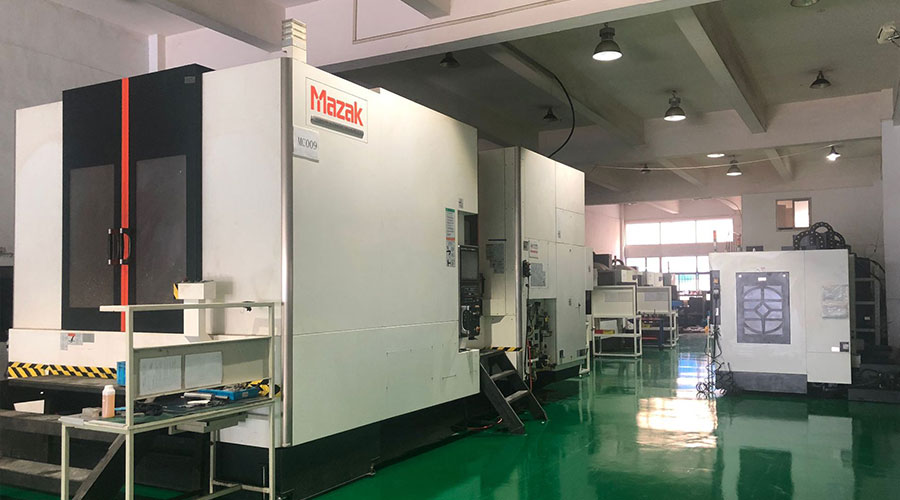![]()
Most 3D printed parts of airplanes are related to guiding the air to some extent and have complex internal geometries such as blades, air ducts and shutters. Since the guided air usually exceeds 260°C, surface-based design methods are crucial.
Boom’s engineer Byron Young explained: “If fast-moving air touches it, we will care about the surface from the perspective of efficiency and performance. Therefore, when designing these parts, we usually start with aerodynamic contours and then trim. , Chamfering and thickening the surface to create the solid part itself. The final part is very complex-which means they definitely need to be manufactured by 3D printing.”
The company’s unique diversion geometry was designed with weight reduction in mind-if sheet metal or castings are to be used, this idea is simply not feasible. In this way, the walls of many components are very thin, on the order of 0.02 inches or 750 microns.
Gene Miller, an application engineer at VELO, said that sapphire’s non-contact coater system makes aspect ratio possible: “Because our technology provides the ability to print very high aspect ratios in this design, there is no need for too much To enhance the internal strength of the structure, we can grow these duct blades very high without being disturbed by the coating machine.”
The 3D printed parts are made of titanium, which is the main product of the aerospace industry and is known for its high strength and high temperature resistance. Unfortunately, titanium can become brittle and easily cracked when it cools too quickly. According to reports, this is where Sapphire’s advanced process control functions come in handy, as the machine can automatically check key parameters such as laser alignment, beam stability and intermediate powder bed quality.
After printing, thanks to Sapphire’s SupportFree 3D printing technology, the parts can be sawn off the template and post-processing is relatively easy. Small gaps and channels are completely unsupported, while larger holes require minimal manual operation with a screwdriver or grinding wheel. All in all, the mechanics of the parts spent only 30 minutes on the post-processing of each part. The average surface finish on the profiler is about 250 RA, which Boom is satisfied with so far.
Finally, heat treatment and hot isostatic pressing are performed on the components to increase their fatigue life-this is especially important for flight components because they have a lowering effect under constant cyclic loading.
Younger concluded: “Supersonic flight introduces many different phenomena and is a pressure that is not normally seen in traditional air travel. The main force applied is usually not from the pressure load that destroys the sound barrier. In many cases, it is caused by The strain caused by the overall structure of the airplane bending around your parts.”
Components essential to flight in the 3D printing industry
In recent years, 3D printing of key aerospace components has kept pace with the development of additive manufacturing technology. The aerospace company Honeywell Aerospace recently received the Federal Aviation Administration (FAA) certification for its first 3D printed flight-critical engine component. The #4/5 bearing housing is the key structural component of the ATF3-6 turbofan engine, which is embodied in the Dassault Falcon 20G maritime patrol aircraft.
Elsewhere, the National Aeronautics and Space Administration (NASA) recently announced the successful completion of 23 heat tests for two important 3D printed aerospace engine components. The problematic parts are the copper alloy combustion chamber and the specially developed iron-nickel superalloy nozzle.
Link to this article:How are 3D printed aircraft components made
Reprint Statement: If there are no special instructions, all articles on this site are original. Please indicate the source for reprinting:https://www.cncmachiningptj.com/,thanks!
 3, 4 and 5-axis precision CNC machining services for aluminum machining, beryllium, carbon steel, magnesium, titanium machining, Inconel, platinum, superalloy, acetal, polycarbonate, fiberglass, graphite and wood. Capable of machining parts up to 98 in. turning dia. and +/-0.001 in. straightness tolerance. Processes include milling, turning, drilling, boring, threading, tapping, forming, knurling, counterboring, countersinking, reaming and laser cutting. Secondary services such as assembly, centerless grinding, heat treating, plating and welding. Prototype and low to high volume production offered with maximum 50,000 units. Suitable for fluid power, pneumatics, hydraulics and valve applications. Serves the aerospace, aircraft, military, medical and defense industries.PTJ will strategize with you to provide the most cost-effective services to help you reach your target,Welcome to Contact us ( [email protected] ) directly for your new project.
3, 4 and 5-axis precision CNC machining services for aluminum machining, beryllium, carbon steel, magnesium, titanium machining, Inconel, platinum, superalloy, acetal, polycarbonate, fiberglass, graphite and wood. Capable of machining parts up to 98 in. turning dia. and +/-0.001 in. straightness tolerance. Processes include milling, turning, drilling, boring, threading, tapping, forming, knurling, counterboring, countersinking, reaming and laser cutting. Secondary services such as assembly, centerless grinding, heat treating, plating and welding. Prototype and low to high volume production offered with maximum 50,000 units. Suitable for fluid power, pneumatics, hydraulics and valve applications. Serves the aerospace, aircraft, military, medical and defense industries.PTJ will strategize with you to provide the most cost-effective services to help you reach your target,Welcome to Contact us ( [email protected] ) directly for your new project.
Link to this article:How are 3D printed aircraft components made
Reprint Statement: If there are no special instructions, all articles on this site are original. Please indicate the source for reprinting.:Silicone And Casting,Thanks!^^